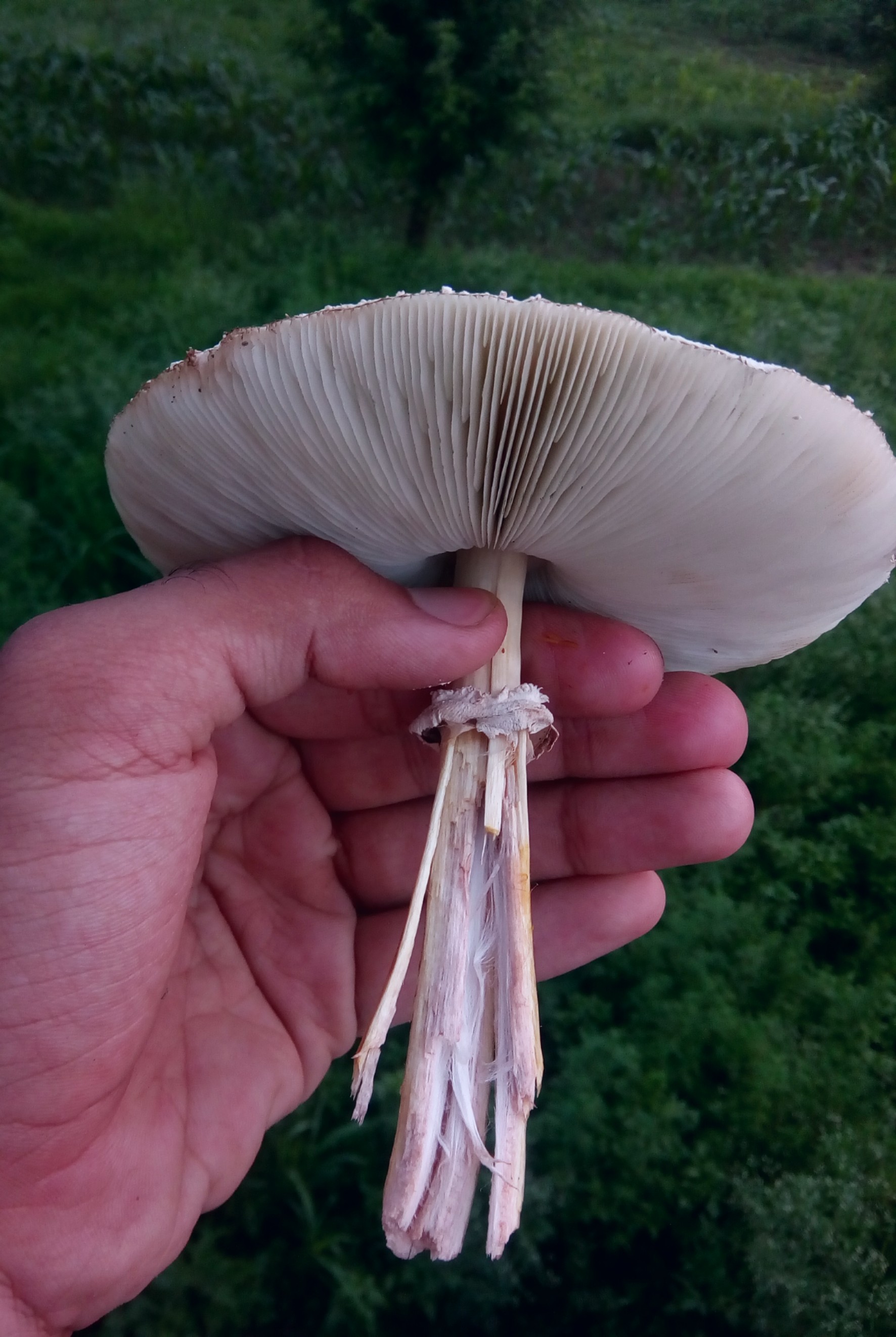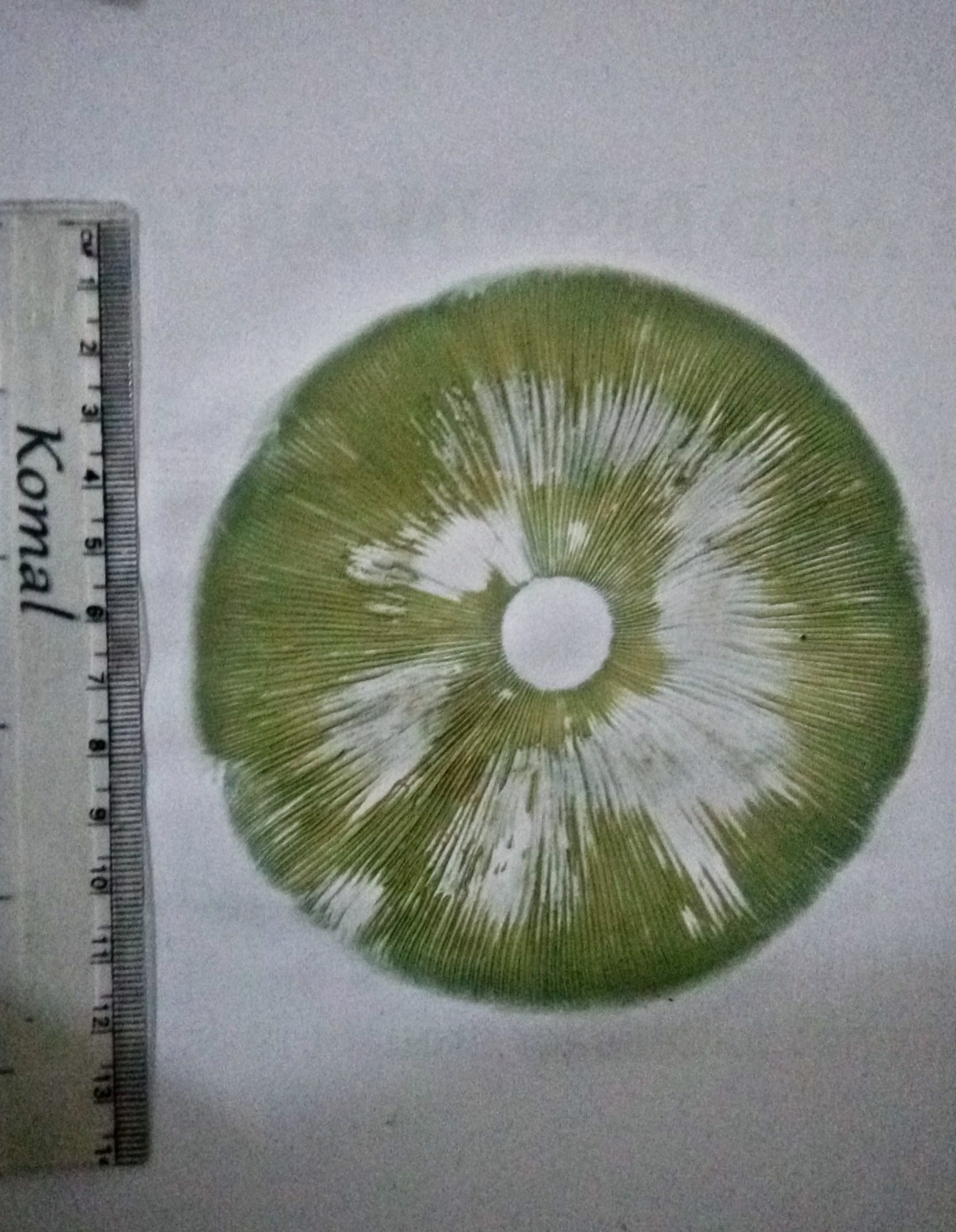Chlorophyllum molybdites (G. Mey.) Massee ex P. Syd., 1900 (syn: Agaricus congolensis Beeli, 1928; Agaricus molybdites G. Mey., 1818; Chlorophyllum esculentum Massee, 1898; Chlorophyllum molybdites (G. Mey.) Massee, 1898 (ambiguous synonym); Chlorophyllum molybdites var. congolense (Beeli) Heinem., 1967; Chlorophyllum molybdites var. luteolosperma Singer, 1948; Chlorophyllum molybdites var. marginatus (A. H. Sm.) D. A. Reid & Eicker, 1991; Chlorophyllum molybdites var. molybdites (G. Mey.) Massee, 1898; Lepiota molybdites (G. Mey.) Sacc., 1887; Lepiota molybdites var. marginata A. H. Sm., 1949; Lepiota molybdites var. molybdites (G. Mey.) Sacc., 1887; Leucocoprinus molybdites (G. Mey.) Pat., 1913; Macrolepiota molybdites (G. Mey.) G. Moreno, Bañares & Heykoop, 1995; Mastocephalus molybdites (G. Mey.) Kuntze, 1891); Here’s i am sharing some images of a False Parasol which is often causes mushroom poisoning as its confused with Macrolepiota procera. Chlorophyllum molybdites False Parasol /Green-spored Lepiota Family – Agaricaceae Green sporeprint is main feature to differentiate this poisonous species from edible species Macrolepiota procera. Photographed at Hamirpur, Himachal Pradesh Dated – 18 July2018 thanks for showing. the green spore print. what nice simple technique that every one who is currently showing us mushrooms must follow Thanks, …, for this wonderful post. I perused differences between these two species on net. Wikipedia gives description of Macrolepiota procera as below: The height and cap diameter of a mature specimen may both reach 40 cm, a size truly impressive for the fruiting body of an agaric. The stipe is relatively thin and reaches full height before the cap has expanded. The stipe is very fibrous in texture which renders it inedible. The surface is characteristically wrapped in a snakeskin-like pattern of scaly growths (therefore, known in some parts of Europe as the “snake’s hat” or “snake’s sponge”). The immature cap is compact and egg-shaped, with the cap margin around the stipe, sealing a chamber inside the cap. As it matures, the margin breaks off, leaving a fleshy, movable ring around the stipe. At full maturity, the cap is more or less flat, with a chocolate-brown umbo in the centre that is leathery to touch. Dark and cap-coloured flakes remain on the upper surface of the cap and can be removed easily. The gills are crowded, free, and white with a pale pink tinge sometimes present. The spore print is white. It has a pleasant nutty smell. When sliced, the white flesh may turn a pale pink. & Chlorophyllum molybdites, a species that causes the largest number of annual mushroom poisonings in North America due to its close similarity. Faintly green gills and a pale green spore print give it away. Furthermore, this mushroom lacks the aforementioned snakeskin pattern that is generally present on the parasol mushroom.[5] Mushroom-Collecting link states “There are brown scales on the stem that have a pattern somewhat resembling herringbone” in Macrolepiota procera, which I do not find in this post on Chlorophyllum molybdites. |
Chlorophyllum molybdites
Updated on December 24, 2024





